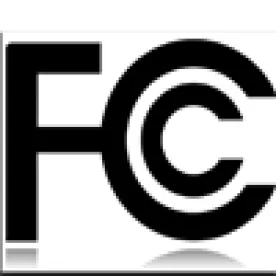On January 20, 2016, the FCC released a Report and Order adopting new broadcast ownership reporting forms in a bid to improve demographic information available to the FCC. The order (1) imposed a requirement for a new Restricted Use FCC Reporting Number (“RUFRN”); (2) increased reporting obligations for noncommercial education broadcasters; (3) limited the availability of Special Use FRNs; and (4) revised the relevant reporting forms for improved efficiency.
The FCC has long taken the position that it has authority to collect information on interests in broadcast stations as a means of furthering its mandate to promote broadcast diversity. To collect the data, the FCC relies on filers to obtain unique FCC Reporting Numbers for each individual with an ownership interest in a broadcast station. The FCC then uses these numbers to track ownership demographic trends. Typically, filers obtain FCC Registration System (“CORES”) numbers, also called CORES FRNs, for this purpose.
The FCC’s new RUFRNs are meant to replace (with limited exceptions) the FCC’s Special Use FRNs (“SUFRN”), which were instituted as an alternative to CORES FRNs for privacy-conscious registrants who refused to provide their social security numbers as required to obtain a standard FRN. SUFRNs had proved problematic for the FCC’s data collection efforts because they did not require filers to supply any demographic information about the individual to whom the SUFRN pertained. Additionally, filers sometimes used more than one SUFRN for a particular registrant over time, making historical data less useful to the FCC. To fix this issue, RUFRNs will require additional identity documentation, and those using them must supply any previously-held SUFRNs to facilitate consistent historical ownership tracking. In particular, individuals seeking to obtain an RUFRN will need to provide their full name, residential address, date of birth, and the last four digits of their social security number.
The FCC also plans to begin collecting demographic information from noncommercial broadcast entities. As the FCC explained, “[c]ollecting these data enables the Commission not only to assess the current state of minority and female ownership of broadcast stations but also to determine the success of programs that are designed to facilitate opportunities for women and minority owned businesses and to promote a diversity of media voices.” The FCC previously collected this information from commercial broadcasters, but had not done so with respect to noncommercial broadcasters. As such, the FCC determined that including noncommercial broadcasters in its demographic data collection would provide a more complete picture of broadcast diversity, and that its statutory mandate to promote diversity in broadcast programming could be better implemented with the collection of noncommercial broadcasters’ data.
In parallel to the launch of RUFRNs, the FCC substantially limited the circumstances in which broadcasters may continue to use SUFRNs. Currently, SUFRNs are available only when an individual with an ownership interest refuses to apply for an FRN. To ensure compliance, the FCC will require filers seeking to obtain an SUFRN (and not an RUFRN or FRN) to take and document the steps that were taken which constitute a good-faith effort to obtain information from individuals with ownership interests, including informing the individual of their options and the possibility that the FCC will take “enforcement action against the filer and/or recalcitrant individual.”
Finally, the FCC revised the reporting forms on which demographic data must be provided, and streamlined the associated procedures. The Form 323 deadline was previously set at November 1 of odd-numbered years for commercial broadcasters with the required information current as of October 1 of that year, i.e., 30 days prior. The Form 323-E deadline was set on a rolling deadline, based on the date that the station filed its license renewal application.
The new deadline will be December 1 for both commercial and noncommercial licensees. Moreover, parent companies with several wholly-owned licensee subsidiaries will be permitted to file a consolidated form, rather than filing separate, redundant forms for each licensee. The FCC determined that these changes, among others, are likely to reduce the number of errors in filing submissions, as well as improve the quality of ownership data collected by the FCC.




 />i
/>i

